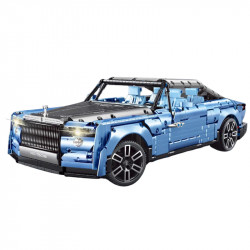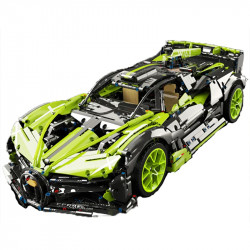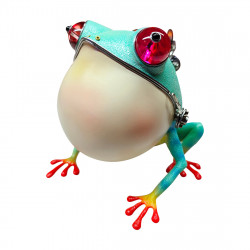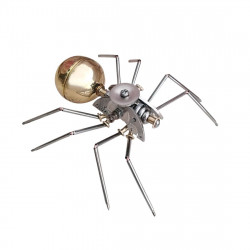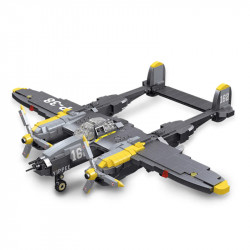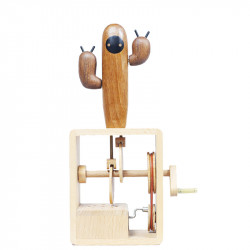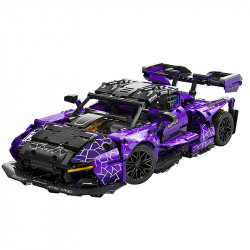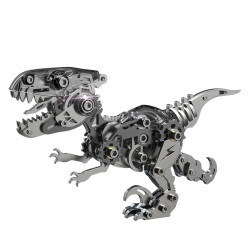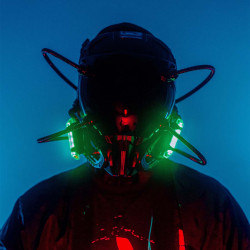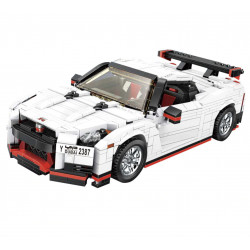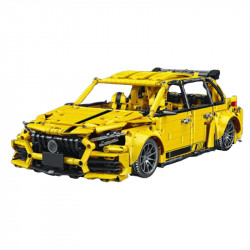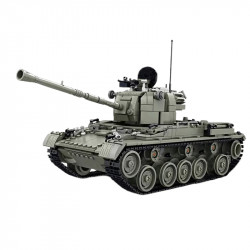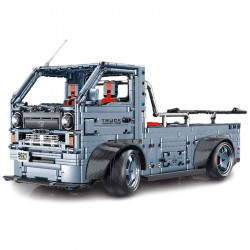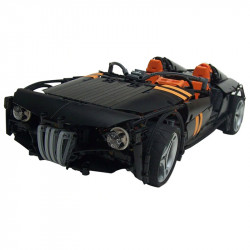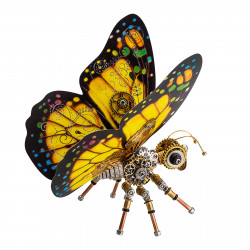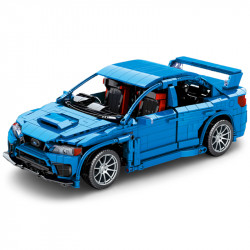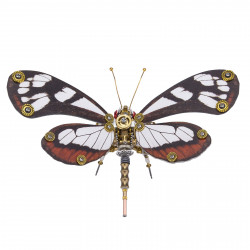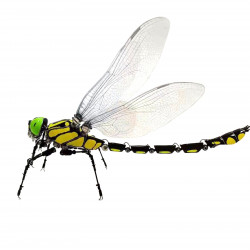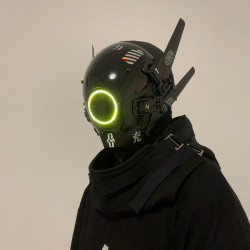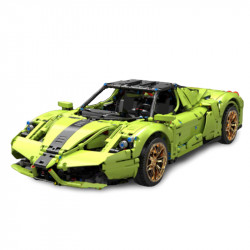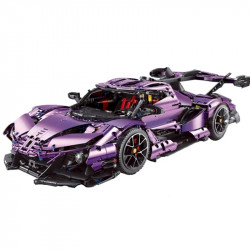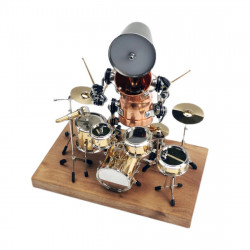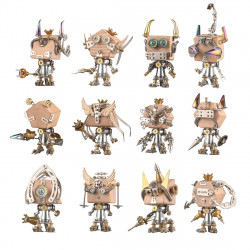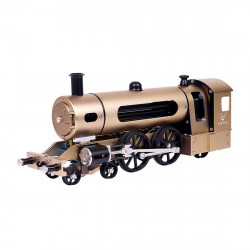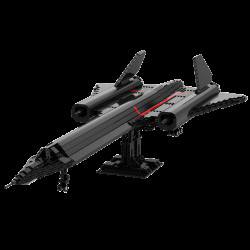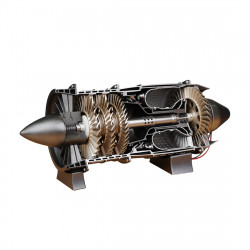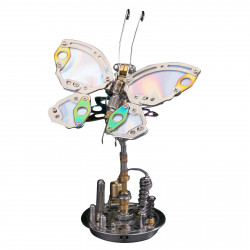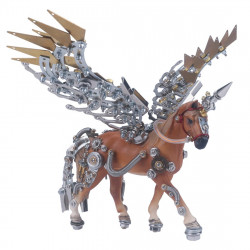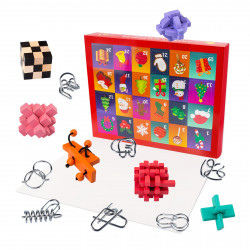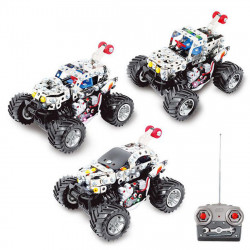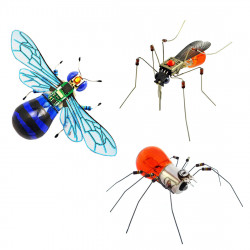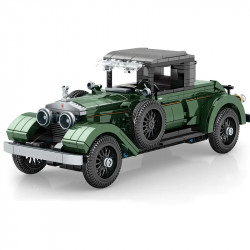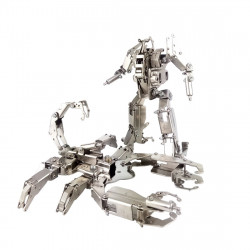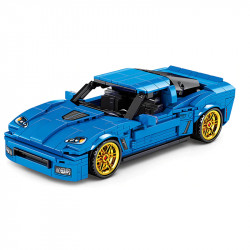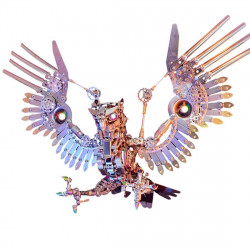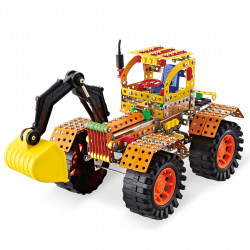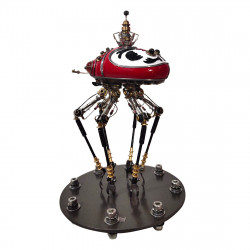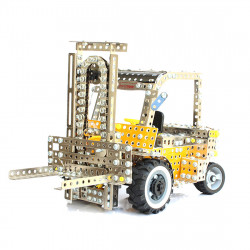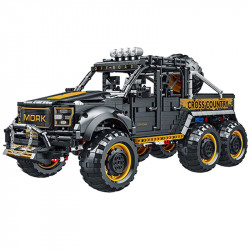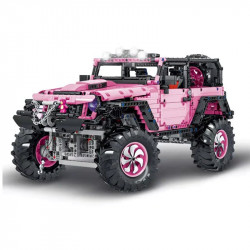Build: Black Panther

Build: Black Panther
This Black Panther sculpture is a beast and a marvel! Yes, both of those puns were deliberate. However, they are also accurate. It's a rugged build, and the design is fantastic. I notice individuals recommending human characters from television series or films whenever Metal3dpuzzles solicits suggestions or requests.
Additionally, it's doubtful that it will occur. Because the human body is merely a collection of interconnected compound curves. Additionally, creating compound curves from a flat 2D material is not easy. On the other hand, someone at Metal3dpuzzles figuratively remarked, "challenge accepted," in reference to Marvel characters.
This crazy model has me in awe. I am aware that many individuals enjoyed making jokes about skipping leg day. Additionally, it has a lot of top-heavy muscles. However, I'm simply in awe of their ability to create a humanoid figure. There are a few strange things here and there, but they are tolerable. Because this is definitely identifiable as Black Panther, they also did a fantastic job in terms of construction; my incorrect form may have caused the few visible holes. In any case, I want to congratulate the Metal3dpuzzles design team on a job well done. Metal3dpuzzles and other companies have produced different "character" models, but they have all avoided the majority of the intricate, convoluted curves by utilizing either style or wardrobe. However, this one confronts them head-on and achieves far more success than it should.
At this stage, I typically review the build procedure, gauge the degree of difficulty, and review each of the model's more complex components. I even attempt to offer guidance on how to approach situations (or how not to, since I have done it incorrectly). This time, however, it's more difficult because it would likely take less time to list the easier areas than the specific difficulties. Complex curves make up this entire build!
I'm not even qualified to offer you much guidance on how to handle those curves. In every project I've done, I've had to deal with countless curves, and I still had very little chance of getting the curves precisely correct the first time. The most straightforward tip for this model is to have a few nice cylinders on hand for forming (I use drill bits and batteries), but don't count on getting the shape quite correct with them. Use the tabs to help you get the right shape after using them to acquire a general idea of the desired shape. Then, use your fingers and cylinder tools to finish. Additionally, locate a narrow, hard object that you may use to bend tabs inside of objects. Since I lack the mental capacity to record the specifics of practically every stage of this build, I hope that general guidance is helpful.
However, I can alert you to a few spots where I did make a mistake. Naturally, these are also the areas where I struggled to read the instructions, where there is a bit of confusing 2D to 3D instruction, where the instructions are unclear, etc. This isn't going to be exhaustive, but I will highlight the more significant ones and perhaps provide some information about how I went against the guidelines and made my life even more challenging (primarily by folding all tabs on the outside and attempting to make as many tabs internal as possible, even though I was told they should be external).
Therefore, I was entirely responsible for my first significant error. I became overconfident and made assumptions about what the instructions would want me to accomplish. Because it made "sense" and I wanted to achieve the proper curvature, I fastened all of the front tabs as I built up the shins. However, you should attach the side tabs on the knee first, then secure the top two tabs on the front. Or at least that's what I believed you should do. According to the online directions, the top two tabs on the front should be secured before adding the knee portion. I'm completely perplexed. I must retrieve and verify my paper instructions, which I keep on file. Fascinating. It was a little simpler to get the knee in when I postponed those tabs on the second leg, so it's something to think about.
I set a good, useless task for myself just on the opposite side of the knee piece. I decided to have the thigh section's bottom tabs fit into the model rather than protrude because it would look better. It is possible to tell you that. However, it's not at all simple. It's very far away. As in, could you not do it? The effort isn't worth it.
It also helps if you bend over the slots a little bit for pieces 7 and 13, which are the higher parts that will link to the torso. It makes aligning the tabs much simpler. I inserted a blunted hobby knife—the very tip fell off—into the slot and bent it in that direction. When you tilt it, it keeps the slot from closing. Later, when you're working on parts 33 and 38, which deal with the shoulder areas, this tactic will also be helpful.
I want to offer you guidance on developing the torso's pelvic region. You have to try your best because it's a challenging, complicated curve. The top half isn't too difficult, at least, apart from the pecs and the rear of the shoulders. Alright, so it's not anymore straightforward in the upper half. However, given the human form, the curves' lack of specificity is really predicted.
I was shocked to find that the head was not as hard as I had anticipated. It wasn't simple, actually, because the face itself is a bewildering jumble of folds. Although it appears that he has a Voldemort nose underneath, folding up isn't that difficult. To make it easier to slot the tabs into the inside, you can use the same angled-tabs approach to round the skull, which is the most challenging portion.
For me, the most challenging part of the arms was the elbow region. Getting everything to line up amongst the different sections and segments—well, my build still has a few minor gaps. However, until I draw attention to them, I doubt that most people will see them. Additionally, I had some difficulty fastening the shoulder components (33/38) to the arm. The tab space almost seemed to be against me. The three tabs are not uniformly spaced. Similarly, the three slots are not uniformly spaced. However, I was optimistic that the two were oriented in reverse, with the more extended space between slots matching the shorter space between tabs and vice versa. It upset me a little, but I was still able to smush it together.
The final assembly also proceeded rather swiftly. As usual with the humanoid-shaped models, it only needed a little leverage to get the arms into position, and aligning the shoulders was enjoyable. Surprisingly, though, this one was much simpler than the majority of the others I've constructed. And without much effort, the feet were fastened to the foundation. Finishing the project with a more Zen-like sequence of steps is pleasant. Well, this model's vanilla build is over. You'll have to wait and see, but I might have done a bit more after the fact. mwahahahahahahahahaaaaaaaaaa!
And one last thing! Using a black Sharpie to touch up the external tabs (as well as any scratches or flaky paint patches) can really improve this model. It does a great job cleaning it.
I'll wrap up this post by sharing the YouTube playlist of my construction sessions for this model, as usual. You might be able to go to a specific area because I was able to divide this one up into "body part" pieces because the build process is so divided up. I spent about six hours building it in total, excluding the time I needed to knock out the parts first.
